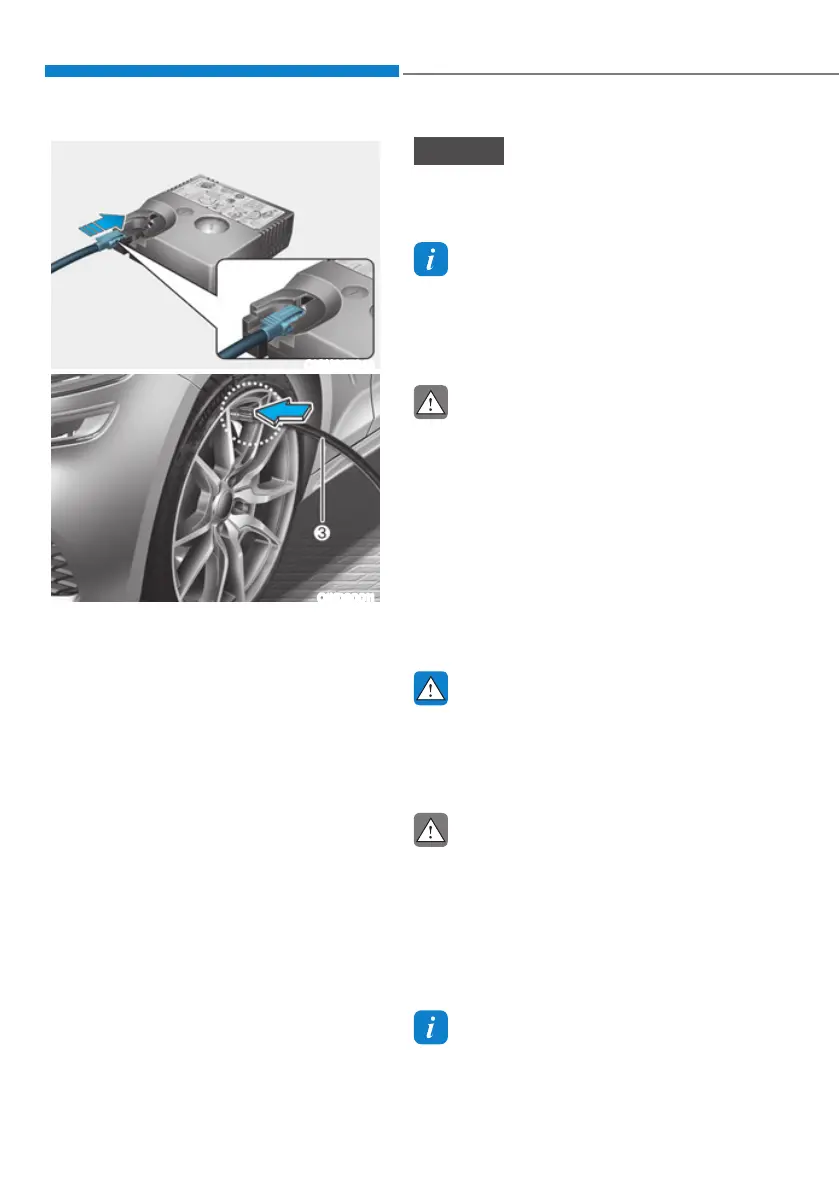Emergency Situations
8-24
OIGH067043
OIK080011
11. After driving approximately 4~6 miles
(7~10 km or about 10 min), stop at a
safety location.
12. Connect the filling hose (3) of the
compressor directly to the tire valve.
13. Plug the compressor power cord into
the vehicle power outlet.
14. Adjust the tire inflation pressure to the
recommended tire inflation.
With the ignition switched on,
proceed as follows.
- To increase the inflation pressure
: Switch on the compressor. To
check the current inflation pressure
setting, briefly switch off the
compressor.
- To reduce the inflation pressure:
Press the button (9) on the
compressor.
NOTICE
Do not let the compressor run for more
than 10 minutes, otherwise the device
will overheat and may be damaged.
Information
The pressure gauge may show higher than
actual reading when the compressor is
running. To get an accurate tire reading,
the compressor needs to be turned off.
CAUTION
If the inflation pressure is not
maintained, drive the vehicle a second
time, refer to step 10.
Then repeat steps 1 to 4.
Use of the TMK may be ineffectual for
tire damage larger than approximately
0.16 in (4 mm).
Have you contact an authorized retailer
of Genesis Branded products if the tire
cannot be made roadworthy with the
Tire Mobility Kit.
WARNING
The tire inflation pressure must be at
least 32 psi (220 kPa). If it is not, do not
continue driving.
Call for road side service or towing.
CAUTION
Tire pressure sensor
(if equipped with TPMS)
The sealant on the tire pressure sensor
and wheel should be removed when
you replace the tire with a new one and
inspect the tire pressure sensors at an
authorized dealer.
Information
When reinstalling the repaired or replaced
tire and wheel on the vehicle, tighten the
wheel lug nut to 79~94 lbf·ft (11~13 kgf·m).
